Publishers have many ways to make money online. AdX and AdSense are two big options. Knowing the differences is key to earning more.
Choosing between AdX and AdSense depends on several things. These include the type of content, who you want to reach, and how much money you want to make. Both platforms help with making money, but they work in different ways and offer unique benefits.
Key Takeaways
- Understand the primary differences between AdX and AdSense.
- Learn which platform is more suitable for your content type.
- Discover how to maximize your revenue with the right choice.
- Explore the unique features of each platform.
- Make an informed decision based on your publishing needs.
Understanding the Basics of Google’s Ad Platforms
Google has two main ad platforms: AdSense and AdX. These platforms help many publishers make money from their online content. Knowing how each platform works is key to choosing the right ad strategy.
Google AdSense connects publishers with advertisers. It lets publishers show ads on their sites and earn money for each ad click or view. It’s great for all kinds of publishers, big or small.
What is Google AdSense?
Google AdSense is popular because it’s easy to use and has lots of support. It lets publishers show ads that match their content, making ads more relevant and increasing earnings.
AdSense uses a cost-per-click model. Publishers get paid when users click on ads on their sites. The platform uses smart tech to match ads with the site’s content and audience, boosting user interaction.
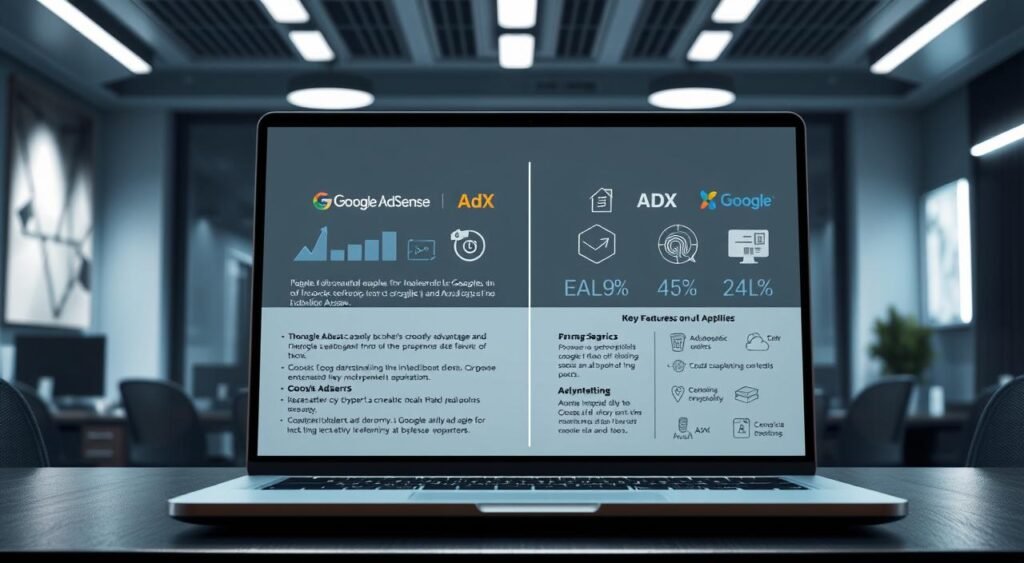
What is Google Ad Exchange (AdX)?
Google Ad Exchange, or AdX, is for big publishers and media companies. It has advanced ad management tools, like real-time bidding and private deals. This makes it more complex than AdSense.
AdX is for publishers who want more control over their ads and access to top advertisers. It offers detailed reports, supports various ad formats, and lets publishers manage ads across different platforms.
The main difference between AdX and AdSense is their target audience and control level. AdSense is easier to use and more accessible. But AdX offers advanced features and higher earnings through real-time bidding and direct deals.
Platform Requirements and Eligibility Criteria
Google AdX and AdSense have different rules for who can use them. Google AdSense is open to most websites and has an easy approval process. Google AdX, on the other hand, is by invitation only or through a partner.
AdSense is for a wide range of publishers, even those with small websites. AdX is for bigger, more established sites or those with lots of ads.
| Criteria | Google AdSense | Google AdX |
|---|---|---|
| Application Process | Open to most websites with an approval process | Invitation-only or through a Google AdX partner |
| Traffic Requirements | No strict minimums, but sufficient content is required | Significant traffic volume is typically expected |
| Content Quality | Must comply with Google’s content policies | High-quality, premium content is preferred |
AdSense and AdX have different roles in Google’s ad world. AdSense is a starting point for many, making it easy to earn money from content. AdX is for bigger, more advanced publishers, with special features and benefits.
Traffic Requirements: AdX vs AdSense
Google AdX and AdSense have different traffic needs for publishers to make money. Knowing these differences is key to earning more.
Minimum Traffic Thresholds
Google AdX needs a lot more traffic than AdSense. AdX wants at least 5 million page views a month. AdSense doesn’t have this strict rule.
This difference affects publishers’ choices. Smaller sites or those with specific audiences might struggle with AdX’s high traffic needs. AdSense could be easier for them.

Geographic Considerations
Where your audience is also matters. AdX likes publishers with lots of viewers in rich countries. These places have more ad money because advertisers want to reach them.
AdSense is more open to publishers with viewers worldwide. This includes those in poorer countries. So, AdSense is good for more types of publishers.
Content Quality Standards
Both AdX and AdSense have strict content rules. But AdX is tougher because it wants top-notch ads and publishers.
AdX publishers must have original, engaging content that follows Google’s rules. AdSense also wants quality content, but it’s not as strict as AdX.
In summary, knowing the traffic rules for AdX and AdSense is vital for publishers. They should think about traffic, location, and content quality. This helps them choose the best platform for their goals.
Revenue Generation
Google AdX and AdSense are key for publishers wanting to boost their ad income. AdX stands out because of its Real-Time Bidding (RTB) system. It also has access to more premium advertisers.
The pricing models of these platforms are important. AdX uses a cost-per-thousand impressions (CPM) model. This means publishers can make more from valuable ads. AdSense, on the other hand, relies on cost-per-click (CPC), where earnings come from ad clicks.
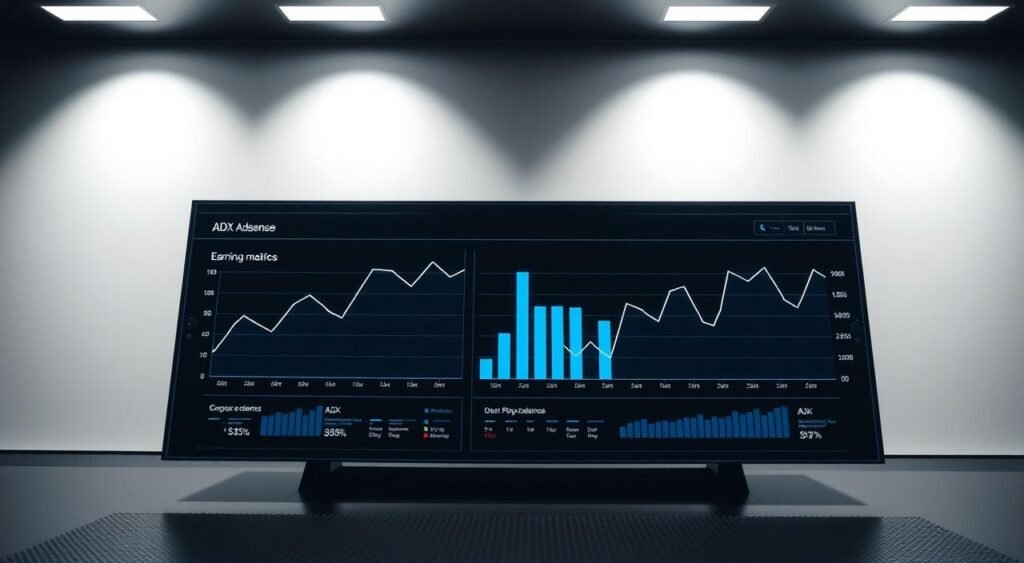
Ad formats supported by each platform also affect earnings. AdX supports native, video, and rich media ads. These formats can increase engagement and revenue. AdSense supports various formats but has fewer options than AdX.
| Platform | Pricing Model | Ad Formats |
|---|---|---|
| Google AdX | CPM, RTB | Native, Video, Rich Media |
| Google AdSense | CPC, CPM | Text, Display, Link Units |
Targeting options are also vital. AdX’s RTB system allows for precise targeting. This means ads are shown based on user demographics, location, and browsing habits. This can lead to more relevant ads and higher earnings for publishers.
In conclusion, Google AdX has a higher revenue edge over AdSense. This is due to its advanced pricing models, diverse ad formats, and precise targeting. Publishers aiming to increase their ad income should consider using Google AdX.
Ad Inventory Control and Management
It’s important for publishers to know the differences in ad inventory control between AdX and AdSense. Ad inventory control means managing the ad space on websites or apps. Both Google AdX and AdSense have features for managing ads, but they differ a lot.
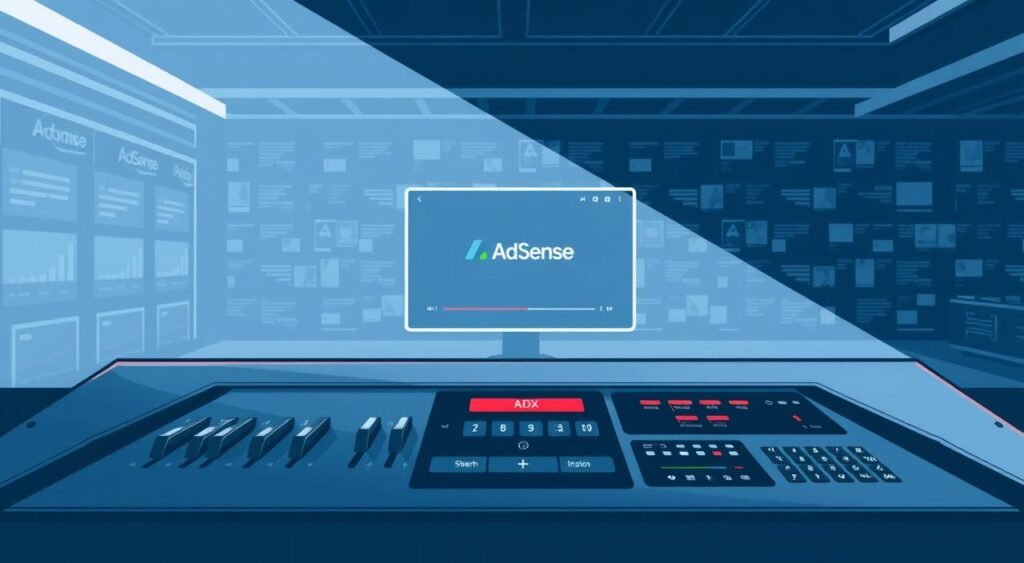
Ad Format Options
Having many ad formats is key for a good ad experience. Google AdX has more ad formats than AdSense, like native, video, and rich media ads. This lets publishers pick the best ads for their content and audience.
| Ad Format | Google AdX | Google AdSense |
|---|---|---|
| Native Ads | Supported | Limited Support |
| Video Ads | Supported | Supported |
| Rich Media Ads | Supported | Not Supported |
Placement Flexibility
Being able to place ads anywhere is important. Google AdX lets publishers put ads in many places on their sites or apps. This lets them try different ad spots to make more money.
Blocking and Filtering Capabilities
Being able to block or filter ads is key for a good ad experience. Google AdX has better blocking and filtering, letting publishers block certain ads or categories. This ensures ads match their content and audience.
In short, Google AdX has more advanced features for managing ads than AdSense. It has more ad formats, placement options, and better blocking and filtering. This makes AdX better for big publishers or those with complex ad needs.
Pricing Models and Bidding Systems
It’s key to know how Google AdX and AdSense set their prices to make more money from ads. Google AdX uses a Real-Time Bidding (RTB) system. This lets advertisers bid on ads right away. This can help publishers make more money because of the competitive bidding.
Google AdSense, on the other hand, uses a cost-per-click (CPC) or cost-per-thousand impressions (CPM) model. Advertisers pay for each click or for every thousand times their ads are seen. This model is easier to understand but might not bring in as much money as AdX’s RTB system.
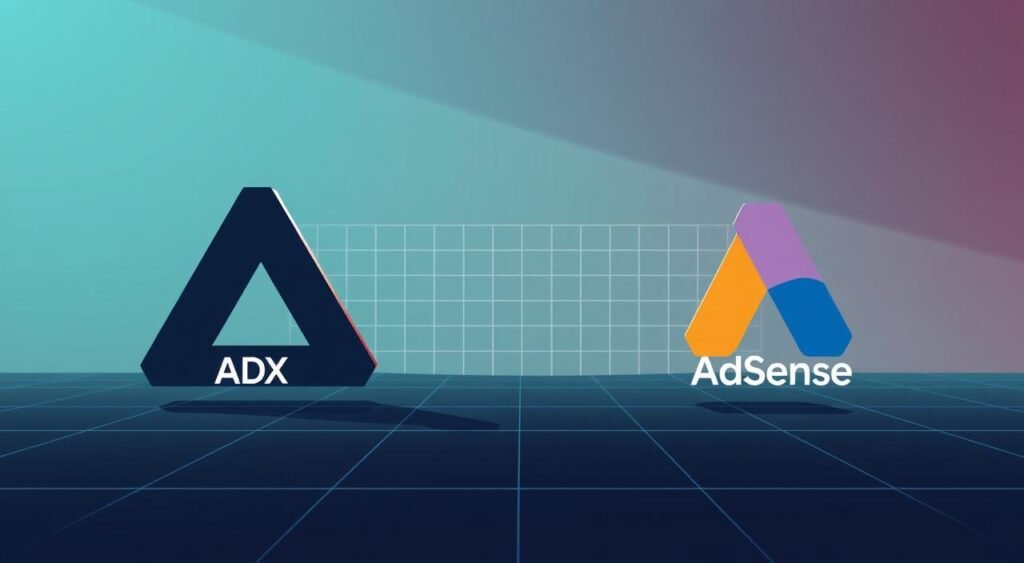
The RTB system in AdX has big advantages. It brings more competition, which can raise ad prices and publisher earnings. It also lets for more precise ad targeting, making the ads more valuable.
AdSense’s CPC/CPM model is simpler to start with, great for smaller publishers or those new to making money from ads. But, it might not earn as much per impression as AdX, if the ads are very popular.
| Pricing Model Features | Google AdX (RTB) | Google AdSense (CPC/CPM) |
|---|---|---|
| Bidding System | Real-Time Bidding | Cost-per-click or Cost-per-thousand impressions |
| Revenue Potencial | Higher due to competitive bidding | Lower, dependent on ad clicks or impressions |
| Complexity | More complex, requires technical setup | Simpler, easier to implement |
Choosing between Google AdX and AdSense depends on how well you can manage your ads. AdX’s RTB system is better for those who can handle it and have lots of traffic. But, AdSense’s CPC/CPM model is easier for smaller sites or those who don’t need to manage ads as much.
Knowing the details of each platform’s pricing and bidding is key to making the right choice. It’s about matching your publishing goals and what you can handle.
Direct Deal Opportunities
Google AdX gives publishers a chance to earn more through direct deals. These deals let publishers work directly with advertisers. This can lead to higher earnings, which is great for big publishers or those with top-notch content.
Private Marketplace Access
Private marketplace access is a big plus of Google AdX. It lets publishers hold private auctions for their ad space. This way, they can attract specific buyers and get better prices for their ads.
Programmatic Guaranteed Deals
Programmatic guaranteed deals are another great thing about Google AdX. These deals let publishers sell their ad space at a set price to specific buyers. This approach offers a steady income and less worry about price swings.
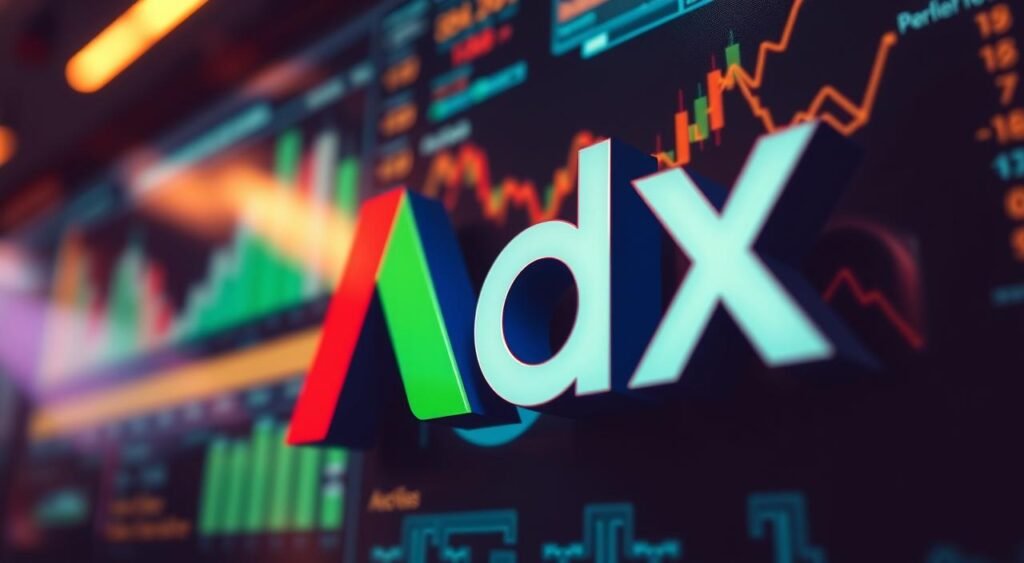
| Deal Type | Description | Benefits |
|---|---|---|
| Private Marketplace | Private auctions for premium inventory | Higher CPMs, control over advertisers |
| Programmatic Guaranteed | Fixed-price deals directly to buyers | Predictable revenue, reduced risk |
By using these direct deal options, publishers can make more money and better their ad plans. Google AdX’s advanced tools make it a top choice for those wanting to boost their ad earnings.
Technical Implementation Comparison
The technical differences between AdX and AdSense are key for publishers. Knowing these differences helps make a choice that fits their technical skills and resources.
Google AdSense is easy to set up and manage. It’s great for many publishers. You just need to add a simple code to your website. This makes it easy to start earning money without needing to be a tech expert.
Setup Process
Setting up AdSense is straightforward, thanks to Google’s clear instructions. You can quickly create an account, add your site, and start showing ads. AdX, on the other hand, needs a more detailed setup. This is because AdX offers advanced features and more control over ads.
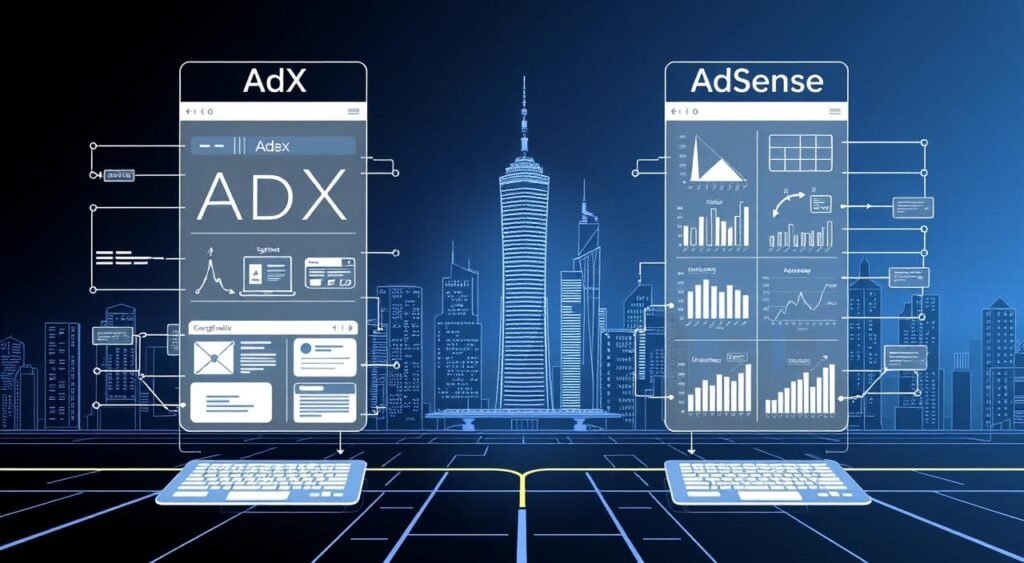
Integration Requirements
Integration needs differ between AdSense and AdX. AdSense is easy, needing just a JavaScript tag. AdX, though, might need API connections with your ad server or CMS. This requires more technical know-how.
| Feature | AdSense | AdX |
|---|---|---|
| Setup Complexity | Low | High |
| Integration Effort | Minimal | Significant |
| Technical Expertise Required | No | Yes |
Choosing between AdX and AdSense depends on your technical skills and resources. AdSense is easy and quick to start, but AdX offers more features and control. Yet, it’s more complex.
Reporting and Analytics Features
Google AdX and AdSense are key for making smart choices. Their reporting and analytics features are essential.
Google AdX has more advanced tools than AdSense. It offers deeper insights and more detailed data.
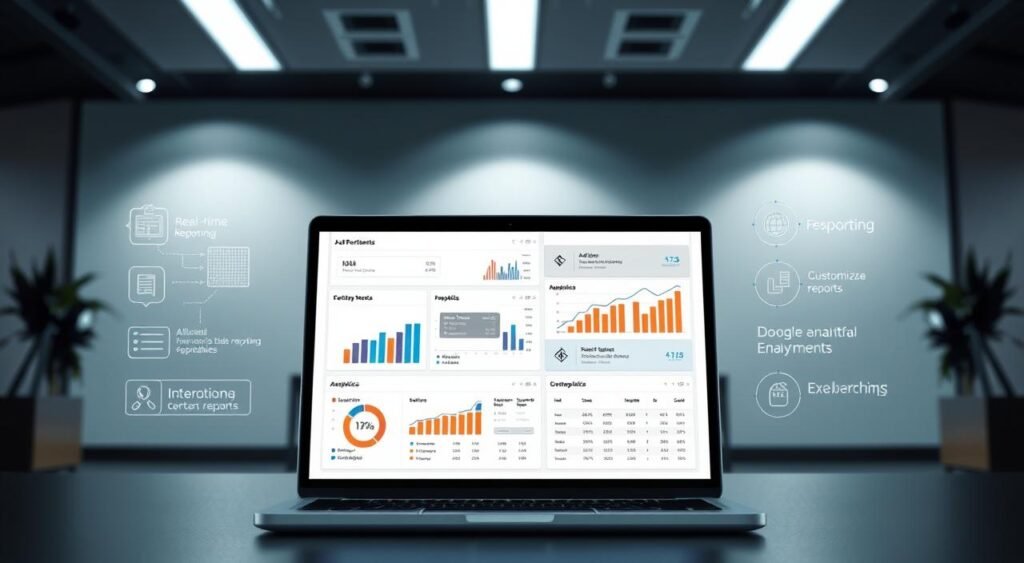
With Google AdX, you get real-time bidding data and ad exchange insights. This gives publishers a detailed look at their ad performance. It helps them fine-tune their ad strategies.
| Feature | Google AdX | Google AdSense |
|---|---|---|
| Real-time Bidding Data | Available | Limited |
| Ad Exchange Insights | Detailed | Basic |
| Reporting Frequency | Real-time | Periodic |
Google AdX and AdSense have big differences in their reporting and analytics. AdX gives publishers more detailed data. This can lead to better decisions and higher earnings.
AdSense, on the other hand, offers simpler reporting. It’s good for smaller publishers or those with simpler ad plans.
Support and Account Management
The support and account management from Google AdX and AdSense are key to a publisher’s success. Each platform has special features for different needs.
Customer Service Options
Google AdSense has an automated support system. It helps through FAQs and online resources. Google AdX, on the other hand, offers a more personal touch with dedicated account managers.
Google AdX provides better support, including technical help. This is important for big publishers or those with complex ad needs.
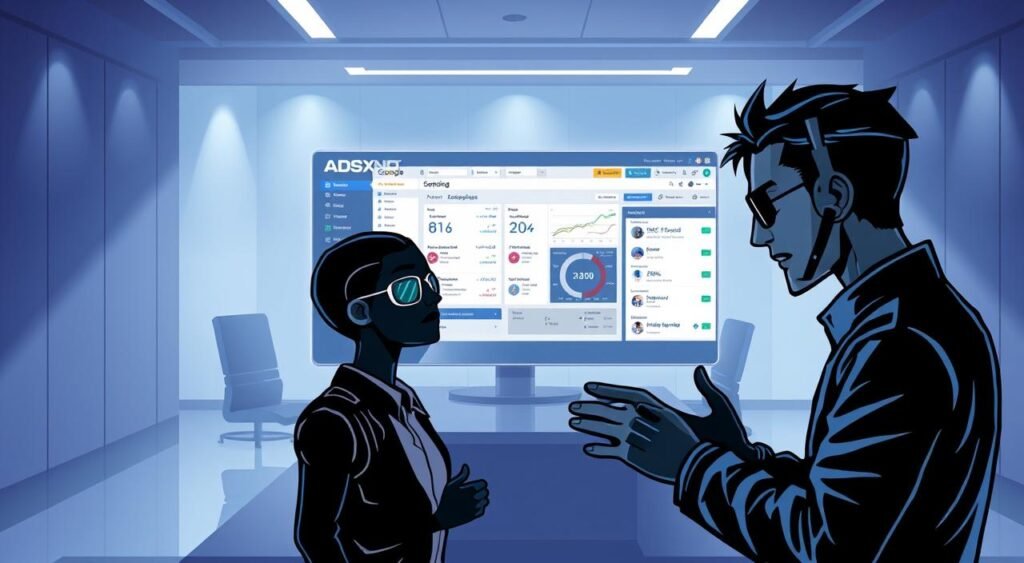
Resource Availability
AdX has more resources because it’s designed for bigger publishers. It has advanced reporting tools and better ad management.
| Feature | Google AdSense | Google AdX |
|---|---|---|
| Customer Support | Automated support system | Dedicated account managers and technical support |
| Resource Availability | Limited resources, mostly automated | Extensive resources, including advanced reporting and ad management |
| Publisher Support | General support for all publishers | Tailored support for larger or high-traffic publishers |
Choosing between Google AdX and AdSense depends on your needs. AdSense is easy and automated. AdX offers more personal and detailed support.
Platform Performance Metrics
To boost ad revenue, knowing how AdX and AdSense perform is key. Both platforms offer insights into ad success. Yet, they differ in their methods and data.
Google AdX shines with advanced metrics, giving publishers a detailed look at their ad performance. These metrics are vital for smart ad placement and revenue growth.
Fill Rates
Fill rate shows the ad request success rate. A high fill rate means more ad space is used, which can boost revenue.
| Platform | Average Fill Rate |
|---|---|
| Google AdX | 90-95% |
| Google AdSense | 80-90% |
CPM Comparisons
CPM (Cost Per Mille) is a key metric for publishers. It affects their earnings. Google AdX usually has higher CPM rates than AdSense, mainly for top ad spots.
Revenue Optimization Tools
Both AdX and AdSense have tools for better revenue. But AdX has more advanced features like real-time bidding. These can increase earnings.
In summary, knowing the performance metrics of Google AdX and AdSense is essential for publishers. By using each platform’s unique features, publishers can optimize their ads and grow their earnings.
Making the Switch: AdSense to AdX
Publishers often think about moving from AdSense to AdX. This move can bring in more money and better ad tools. Recent data shows that switching can really boost ad earnings.
To switch, publishers need to meet AdX’s rules. This means having a lot of website traffic and quality content. After meeting these criteria, they can apply to join AdX through Google’s Ad Exchange.
Switching to AdX can lead to more money. AdX lets publishers work with more advertisers, including big brands. This can mean higher CPMs. Plus, AdX has better ad tools, like real-time bidding and private marketplaces, to help manage ads better.
| Feature | AdSense | AdX |
|---|---|---|
| Revenue | Limited by fixed CPM rates | Higher due to real-time bidding and access to premium advertisers |
| Ad Management | Basic ad placement and management | Advanced features including real-time bidding and private marketplaces |
| Eligibility | Open to most websites with moderate traffic | Requires high-traffic websites with quality content |
But, switching to AdX isn’t easy. AdX is harder to get into, and managing ads can be tough. Yet, for those who do it right, the benefits are worth it.
In short, moving from AdSense to AdX can be a smart choice for publishers. It can help them earn more and use better ad tools. Knowing the pros and cons helps publishers decide what’s best for their business.
Common Challenges and Solutions
Google AdX and AdSense are great for making money, but they can have problems. Publishers face technical issues and platform-specific problems. Knowing these challenges and how to solve them is key to making more money and having a good ad experience.
Platform-Specific Issues
Publishers using Google AdX and AdSense might run into problems specific to each platform. AdX is for big publishers and has cool features, but it’s harder to set up. AdSense is easier to use but might not offer as many ad formats or make as much money.
Some common problems include trouble with ad tags, limits on ad serving, and differences in targeting. To fix these, publishers should read the platform’s guides and use Google’s support forums and community talks.
Troubleshooting Guide
When problems come up with Google AdX or AdSense, there’s a step-by-step guide to help. This might mean checking ad tags, looking at ad serving settings, and making sure you follow the platform’s rules.
Common problems include ad serving errors, low fill rates, and earnings not matching up. By finding the cause and using the tools available, publishers can fix these issues fast and keep their earnings up.
| Issue | AdX | AdSense |
|---|---|---|
| Ad Serving Errors | Check ad tag implementation and server-side ad serving settings | Verify ad code and ensure correct placement |
| Low Fill Rates | Review ad inventory and adjust targeting settings | Optimize ad placement and increase ad inventory |
| Earnings Discrepancies | Check reporting settings and verify payment information | Review ad performance and adjust ad settings |
By knowing the common problems with Google AdX and AdSense, publishers can take steps to avoid them. Whether you’re using AdX or AdSense, being aware of the possible issues and having a plan to deal with them is essential for success.
Best Practices for Maximum Revenue
Getting the most from Google AdX and AdSense is more than just showing ads. It’s about having a smart plan. Publishers need to focus on practices that really work.
One important thing is to place ads wisely. Where you put ads can really change how much money you make. For example, ads above the fold or in the content can get more views and clicks.
Choosing the right ad types is also key. Google AdX and AdSense have many ad types, like display, video, and native ads. Try out different ones to see which work best for your site.
| Best Practice | Google AdX | Google AdSense |
|---|---|---|
| Ad Placement Optimization | Advanced targeting and real-time bidding enable precise ad placement. | Contextual targeting and automated ad placement. |
| High-Performing Ad Formats | Supports a wide range of ad formats, including video and native ads. | Offers display, link, and native ad formats. |
| Real-Time Bidding | Leverages real-time bidding to maximize revenue. | Uses a cost-per-click (CPC) pricing model. |
Using real-time bidding (RTB) is also vital for making more money with Google AdX. RTB lets publishers sell their ad space to the highest bidder right away. This way, they get the best price for their ad spots.
By following these best practices, publishers can really boost their earnings with Google AdX and AdSense. It’s all about finding the perfect mix of ad placement, type, and bidding strategy to make the most money.
Conclusion: Choosing Between Google AdX vs AdSense
Publishers looking to boost their ad earnings have to pick between Google AdX and AdSense. The right choice depends on what you need and want, like how much money you can make, your technical skills, and your ad strategy.
Google AdX is great for big websites or those wanting more control over ads. It has cool features and can make more money. But, it needs more tech know-how.
AdSense is easier for smaller sites or those with less tech skills. When planning your ad strategy, think about ad types, pricing, and how to track your earnings.
Choosing between adx and adsense depends on your situation. Knowing the differences helps publishers make smart choices and increase their ad income.

Gulf Vellala matrimony traditions thrive on understanding platforms.